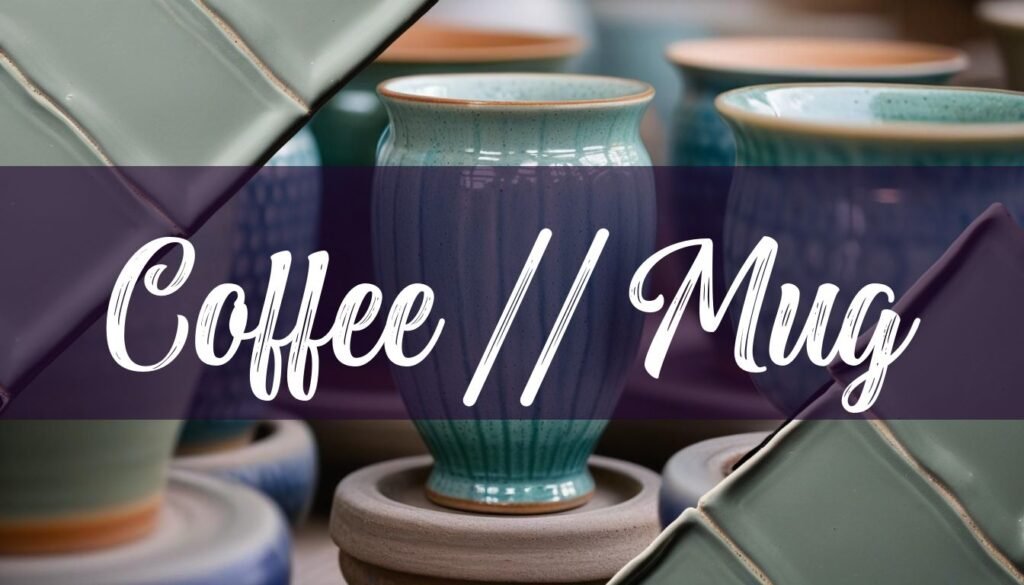Crafting a coffee mug from clay is a rewarding process, blending artistry with functionality. This guide will walk you through the steps, perfect for beginners eager to create their own handmade mugs.
First, you’ll need to gather your materials and tools. Clay is the heart of your mug, and the type you choose matters. Stoneware clay is often recommended for its versatility and durability. It’s easy to work with and, once fired, becomes strong, non-porous, and capable of holding liquid, even without glazing. High fire stoneware clays are a good option, as they produce durable ware and work well with both wheel throwing and hand building. Earthenware is another option, known as a low-fire clay, but it’s naturally porous and requires glazing to hold liquids. Porcelain clay is soft and flexible but can be tricky to shape, requiring higher firing temperatures. To learn more, you might explore what type of clay is used for ceramics.
Beyond clay, essential tools include a pottery wheel for shaping, various ribs for smoothing and shaping, a sponge for wetting and cleaning, a wire cutter for slicing clay, and trimming tools for refining the mug’s form. You’ll also need an apron to protect your clothing and a banding wheel for decorating.
Shaping and Creating the Mug
Start by preparing your clay. Wedge it to remove air bubbles and ensure a consistent texture. This step is crucial for preventing cracks during firing. Next, center the clay on the pottery wheel. This involves using your hands to guide the spinning clay into a stable, centered mound. Once centered, form a basic cylinder shape. Open the clay by creating a hole in the center, then widen it to form the base of the mug.
Now, pull the walls of the cylinder upwards, using your fingers to compress and thin the clay. Repeat this process several times to achieve the desired height and thickness of the mug walls. Shape the mug by gently pressing outwards or inwards, creating a curve or taper as desired. Throughout this process, keep the clay moist to prevent cracking. Smoothing the clay is essential for a professional finish. Use a rib or sponge to smooth the interior and exterior of the mug, removing any bumps or imperfections. Ensure the thickness of the walls is even to prevent stress points that could lead to cracks during drying or firing. If you are new to pottery, you should understand the tools you will need to get started.
Creating a handle requires a separate piece of clay. Roll out a coil of clay and shape it into a handle that fits comfortably in your hand. Score and slip both the handle and the mug where they will connect. This involves scratching the surfaces and applying a clay slurry (slip) to create a strong bond. Attach the handle to the mug, blending the edges to create a seamless join.
Drying and Firing
Allow the mug to dry slowly and evenly. Cover it loosely with plastic to prevent it from drying too quickly, which can cause cracks. Once the mug is bone dry, it’s ready for bisque firing. Bisque firing is the first firing, typically at a lower temperature.
Once bisque fired, the mug is ready for glazing. Select a food-safe glaze to ensure the mug is safe for holding beverages. Apply the glaze evenly, following the manufacturer’s instructions. After glazing, the mug undergoes a glaze firing at a higher temperature, which vitrifies the glaze and bonds it to the clay body. Kiln firing schedules are important to adhere to. Firings are typically slow, spanning many hours or even days.
Food Safe Glazes and Considerations
When choosing a glaze, ensure it is specifically labeled as food-safe. This means it is lead-free and won’t leach harmful chemicals into beverages. It is a good practice to use a transparent or white liner glaze on the inside of any piece meant to be used with food or drink. Any glaze that comes in contact with food needs to be chemically sound and not leach metal oxides into the food. Avoid glazes that are heavily crystallized, overly melted, brightly colored without a clear overglaze, or very matte, as these are more likely to be unsuitable for food.
Caring for Your Handmade Mug
To prolong the life of your handmade mug, handle it with care. While many stoneware and porcelain pieces are dishwasher and microwave safe, avoid exposing them to extreme temperature changes. Hand washing with mild soap is always a gentle option. If using the dishwasher, ensure the mug is secured to prevent it from rattling against other items. For stubborn stains, soak the mug in warm water with a little white vinegar and dish soap.





